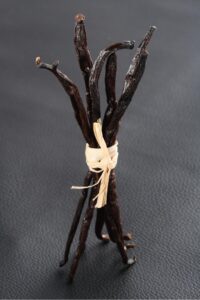Physical Address
304 North Cardinal St.
Dorchester Center, MA 02124
Physical Address
304 North Cardinal St.
Dorchester Center, MA 02124
Vanilla is one of the most beloved and widely used ingredients in Western cuisine, known for its rich, sweet, and aromatic flavor. But is vanilla a fruit? This question often arises among food enthusiasts and culinary professionals. To answer it, we need to explore the botanical origins of vanilla and its role in the culinary world. This article will delve into the fascinating journey of vanilla, from its growth as an orchid to its transformation into a staple ingredient in desserts, beverages, and savory dishes.

Vanilla is derived from the vanilla orchid, specifically the species Vanilla planifolia. This tropical orchid is native to Mexico but is now cultivated in regions like Madagascar, Tahiti, and Indonesia. The part of the vanilla plant that we use in cooking is the seed pod, commonly referred to as the vanilla bean. These beans are harvested, cured, and processed to produce vanilla extract, vanilla powder, and other vanilla-based products.
Is Vanilla a Fruit?
Botanically speaking, a fruit is the mature ovary of a flowering plant, typically containing seeds. In the case of vanilla, the vanilla bean develops from the ovary of the vanilla orchid flower after pollination. Therefore, technically, the vanilla bean is a fruit. However, it is not a fruit in the traditional sense, like apples or oranges. Instead, it is a specialized seed pod that contains thousands of tiny seeds embedded in a fragrant, oily pulp.
The Journey of Vanilla: From Flower to Flavor
The process of producing vanilla is labor-intensive and requires meticulous care. Here’s how vanilla transforms from a flower to a culinary ingredient:
Culinary Uses of Vanilla
Vanilla is a versatile ingredient that plays a central role in Western cuisine. Its warm, sweet, and complex flavor enhances a wide range of dishes, from desserts to savory creations. Here are some popular uses of vanilla:
Why Vanilla is a Culinary Treasure
Vanilla’s unique flavor profile is due to its complex composition of chemical compounds, with vanillin being the most prominent. This compound gives vanilla its characteristic aroma and taste. Additionally, the presence of other minor compounds enhances its overall complexity, making it a versatile and irreplaceable ingredient in the kitchen.
Conclusion: Is Vanilla a Fruit?
While vanilla may not fit the traditional image of a fruit, botanically, the vanilla bean is indeed a fruit. Its journey from an orchid flower to a culinary treasure is a testament to its value and versatility. Whether you’re baking a cake, crafting a cocktail, or experimenting with savory dishes, vanilla adds a touch of elegance and flavor that is unmatched.
For those exploring Western cuisine, understanding the origins and uses of vanilla is essential. Its rich history, labor-intensive production process, and unparalleled flavor make it a cornerstone of culinary creativity. So, the next time you enjoy a dish flavored with vanilla, you’ll know that you’re savoring the essence of a unique and remarkable fruit.
By incorporating vanilla into your recipes, you’re not just adding flavor—you’re embracing a centuries-old tradition that continues to inspire chefs and food lovers around the world. Whether you’re a professional chef or a home cook, vanilla is an ingredient that deserves a special place in your kitchen.